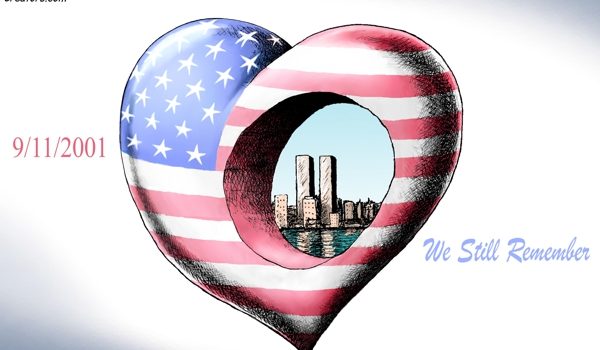
Putting criminals in jail isn’t racist or sexist just because those criminals are disproportionately of a particular race or sex. In a 1996 ruling, the Supreme Court rejected the “presumption that people of all races commit all types of crimes” at the same rate, as being “contradicted by” crime statistics. (See United States v. Armstrong). It’s no secret to anyone that men commit crimes at a higher rate than women, and it’s also an indisputable fact that blacks commit crimes at a higher rate than whites, and Asians commit crimes at a lower rate than whites do.
But today, the higher black crime rate often leads to claims that society is racist. The Washington Examiner recently published an op-ed titled, “It’s Time to Create a Conservative Ecosystem that Doesn’t Welcome Racists.” In it, Timothy P. Carney writes,
Conservatives don’t give it enough attention, but one of the greatest evils in the U.S. today is rank racial inequality. The median income of African Americans is below $31,000, which is less than half the median income of white Americans. More blacks are imprisoned in America than are whites, even though there are nearly five white people here for every black person.
There are a thousand points of data like this, all confirming that being an African American means living with the odds stacked against you.
In short, Carney is claiming that the higher rate of black people being jailed is due to racism — because “the odds” are “stacked against” them, due to “rank racial inequality.” That only makes sense if there is no difference between the black crime rate and the white crime rate but yet blacks are being jailed at a higher rate. But crime rates are not the same for different groups, as the statistics for various crimes cited in the Supreme Court’s Armstrong decision make clear. In fact, there are huge differences. As the federal Bureau of Justice Statistics noted in Homicide Trends in the United States, “Blacks are disproportionately represented as both homicide victims and offenders.” As newspaper columnists have noted, the homicide rate is 10 times higher among black teens than white teens. So a higher black incarceration rate is not necessarily the result of racism.
Will this presidential election be the most important in American history?
To be sure, racism in the criminal justice system is real. There are terrifying examples, like the racist torturer cop John Burge, or the travesty in Tulia, Texas. But there is no evidence that racism accounts for more than a tiny fraction of the black people in prison, anymore than sexism explains why most prisoners are male.
It is true, as a former prosecutor points out, that “African-Americans constitute 52.6% of those arrested on charges of murder and non-negligent manslaughter,” even though only 13% of all Americans are black. As Wikipedia points out, “According to the US Department of Justice, African Americans accounted for 52.5% of all homicide offenders from 1980 to 2008. … The offending rate for African Americans was almost 8 times higher than European Americans.”
Police aren’t fabricating those murders or manufacturing fake dead bodies. Those murders are actually occurring, and the victims of black murderers are overwhelmingly other black people. As the Washington Post reported, “90 percent of black victims were killed by black offenders” according to the 2013 FBI Uniform Crime Report. As Wikipedia points out, “Most homicides in the United States are intraracial — the perpetrator and victim are of the same race.”
The percentage of murder suspects who are black is actually even higher than the percentage of those arrested and convicted, well over 50%, due to many murderers evading arrest in predominantly black areas like the south side of Chicago. A perpetrator is less likely to be arrested after committing murder in such areas, which results in a lower likelihood of arrest for homicides involving a black victim or perpetrator.
Ironically, Carney himself hints at the problem of under-arrests for murder in black neighborhoods like Chicago’s South Side. He says “the game is rigged so badly in the U.S. that thousands of young men are shot on the streets of Chicago.” A society that truly valued black life as much as white life would jail more black murderers, not fewer, resulting in a prison population that (in the short run at least) would be even more heavily black than it is today. Carney suggests that the black prison population is too large, but in some ways, it may be too small to protect other black people, who are the primary victims of black-on-black crime. Turning a blind eye to black-on-black crime would impose a terrible cost on black people. As PolitiFact has pointed out, “92 percent of blacks who were murdered were killed by other blacks” in 2010-2013.
Most people in prison are there for violent crimes, or property crimes, and racism plays little role in their arrest. In 1994, federal government statistician Patrick A. Langan analyzed data on 42,500 defendants in the nation’s 75 largest counties and found “no evidence that, in the places where blacks in the United States have most of their contacts with the justice system, that system treats them more harshly than whites.” People are typically arrested for violent crimes based on reports by victim, who is usually of the same race as the perpetrator, or reports by witnesses who are the same race as the assailant. Not based on racist police fabricating a crime.
The idea that rates of violence don’t differ based on sex or race is contradicted by self-reported behavior in surveys. For example, black youngsters admitted to getting in fights at over twice the rate of whites and three-times the rate of Asians, in a federal survey conducted in 2009-10 by the National Center for Education Statistics (“Indicators of School Crime and Safety”). A partial explanation for this disparity is the fact that black youngsters are more likely to grow up in broken single-parent families than white kids are. The vast majority of criminals grow up in single-parent households.
There is abundant evidence of racial bias in police stops, which can lead to arrests for drug offenses. But most people in prison are there for violent crimes or theft, not drug offenses (and most of those in prison for drug offenses are there for dealing drugs, not using them). As the liberal criminologist John Pfaff points out, only 15% of people in prison are there for drug offenses. And people in prison for violence are more disproportionately black than people in prison for drug offenses. The war on drugs is not why America has a disproportionately black and brown prison population. The higher crime rate among these minority populations is.
Despite the illogical nature of Carney’s op-ed, it was approvingly linked to on Twitter by people who write about criminal justice reform and should know better, such as the Cato Institute’s Jonathan Blanks, and Washington Post blogger (and former Cato Institute employee) Radley Balko. They seem to share his unfounded view that higher black incarceration rates are due entirely to racism, rather than the higher black crime rate. Ironically, the Cato Institute used to recognize just the opposite: that the black crime rate is higher than the white crime rate.
In 2016, the Cato Institute’s Timothy Lynch, an outspoken critic of racism in police searches, admitted as much: He conceded that conservative criminal-justice writer Heather Mac Donald “is on solid ground some of the time, as when she debunks the liberal notion that black crime is no higher than white crime,” by citing the much higher black murder rate.
Carney’s illogic was mild compared to that of presidential candidates Pete Buttigieg and Gary Johnson. Buttigieg falsely attributed the higher black incarceration rate to blacks being arrested at six times the rate as whites for committing “the exact same crime” — assuming without any evidence that the black and white crime rates are equal, a claim that even liberal criminologists and criminal justice reporters tend to admit is false. Johnson falsely claimed that, once “arrested,” blacks have a “four times greater likelihood” of going to jail than whites — a claim that falsely suggests that the vast majority of whites arrested are never even jailed, which is obviously not true.
Whites have done many bad things to black people over time — slavery; mass murder and genocide in places like the Congo and Namibia; and the widespread theft of black land and destruction of black businesses in the United States.
But putting violent criminals in jail isn’t one of them. Jailing criminals isn’t a bad thing, even when the criminals are black. Indeed, turning a blind eye to crimes by blacks is itself racist, given how frequently violent crime is black-on-black. Being soft on crime just adds insult to injury.



